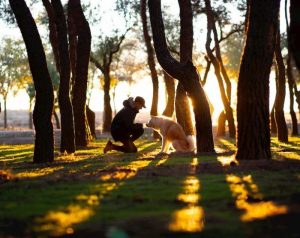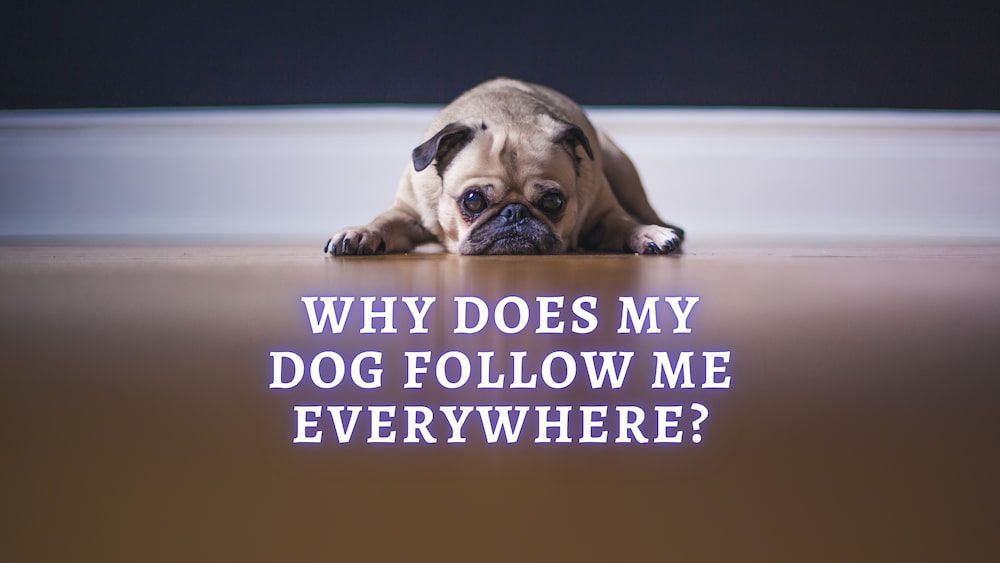
Dogs have been living with humans for a very long time, during which many studies and experiments have been conducted. In one such study, MRIs revealed that while dogs hear their owner’s voice or recognize a familiar smell, activity appears in the brain in areas that work during games, encouragement, and reward. Thus, we can safely assume that the owner’s smell, voice or appearance brings pleasure to the dog. This is also due to its associative series: the owner feeds, bathes, combs, plays with, and entertains it; thus, the dog understands that, if nearby, the owner will play with, feed, love and take care of it. These factors deliver positive emotions to the furry friend.
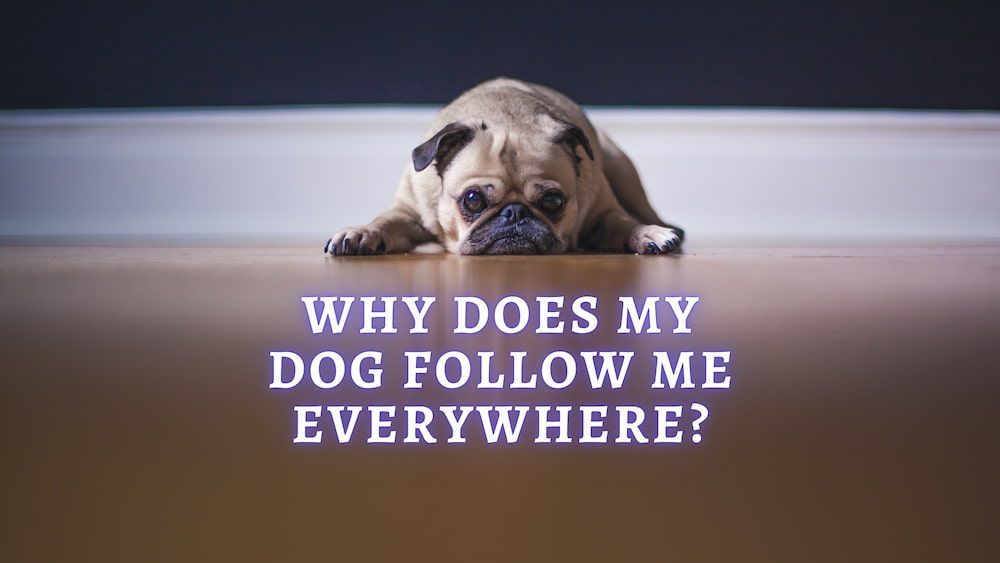

Photo by Matthew Henry on Unsplash
Following Behavior in Dogs: Why it Happens
There are several reasons why dogs follow your around the house – it may want attention and to play, or is bored or hungry. Behavior problems can be classified only approximately. Each case should be studied individually, and recommendations and behavior correction programs should be developed for a specific animal. However, there are several common reasons your dog follows:
1. It’s Time For Dinner or a Walk
Dogs like walking outdoors and actively spending time with their owners. If you take your dog for a walk at a specific time every day, do not be surprised if, at the specified time, the dog follows you around or waits for you at the door. All animals have a biological clock that tells them when the usual time comes to walk or play.
2. Companionship
Dogs often get bored when the owner is at work or out of the house. The problems caused by the stress that occurs in dogs when their owners are not with them take various forms: incontinence in the house, teeth and claw damage to household items, howling and barking. And, when you come home, you will see a fluffy family member wagging its tail and running to meet you. A dog wants to spend time doing something active. During your absence, you can offer your pet a few toys that will brighten up its loneliness.
READ MORE: Why Does My Dog Chase His Tail?
3. They Want Attention
Many owners spend very little time engaging in activities with their pets. At such moments, your dog may get bored and come to you with a ball or toy, hinting that you need to play and have fun with him. The owner’s attention and interaction are the most important events in the life of a pet. You need to spend enough time playing games with and walking your pet. Walking and gameplay greatly improve the pet’s attachment to a person. If the animal receives positive emotions, it will show physical and brain activity.
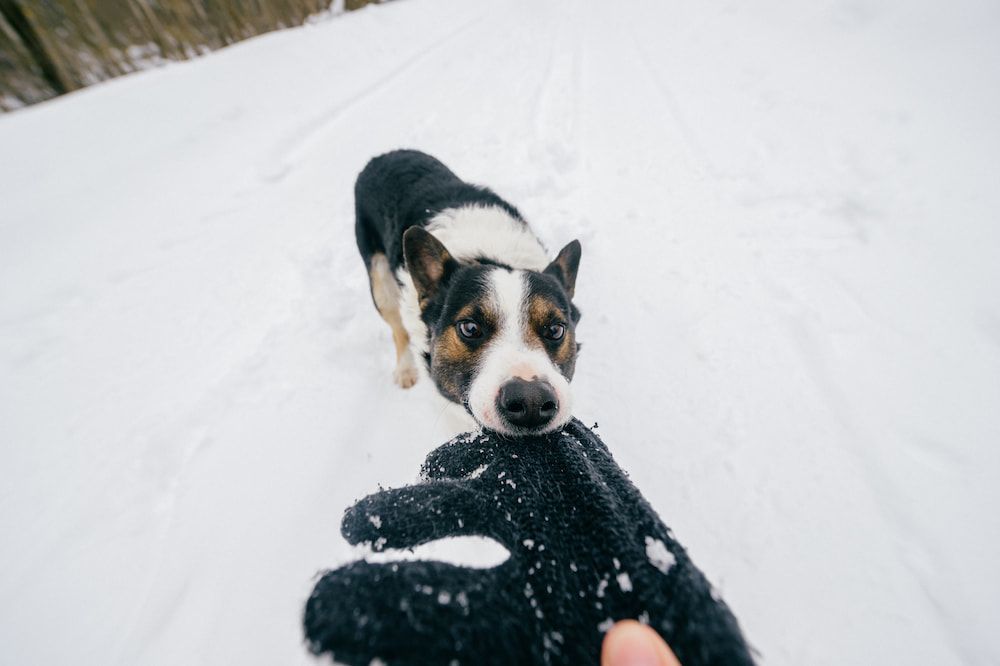

Photo by @benevolente82 from Freepik
4. They’re Afraid
Do not be surprised if your dog always wants to be near you in an unfamiliar place. Strangers and new smells and sounds can scare your furry friend. In such cases, you can not push away or scold the dog. It is only necessary to stop for a minute, stroke and talk to your four-legged family member, and it will feel your protection, calm down and continue on its way with you. Also, any sharp or edgy sound, such as thunder, may cause a dog to become afraid or confused, resulting in following its owner.
5. They’re Trying to Tell You Something
If you live in a private house and your dog walks freely in the yard, he can find something interesting or dig something up. The dog will immediately rush to its owner to alert him/her to its discovery. In such cases, the dog may even start barking or whining. It is not always easy to understand exactly what your friend wants from this behavior. But do not be angry, because dogs explain as they can.
6. Breed Traits
Some breeds are very connected to their owners. They consider their owners the leaders and heads of the family. Such breeds are very fond of being around and helping if necessary. This behavior is typical for labradors, huskies, dachshunds, German shepherds, Akitas, Rottweilers, Collies and Dobermans.
However, not all breeds like to be around all the time and, instead, want to be alone, play with their toys independently or just lie down and watch what is happening around them. This behavior is normal for greyhounds, pugs, and Newfoundlands.
7. Separation Anxiety
After a long separation from its owner (e.g. during a vacation or departure), a dog may walk on the heels of its owner. This is because the dog did not receive the usual attention in your absence and did not spend enough time with you, playing games and being entertained. The animal may be afraid you will go away again and try to be as close to you for as much time as possible. [1]
Signs Your Dog Has Separation Anxiety:
- Disturbing reactions in the presence of the owner.
- An alarming reaction to the owner’s preparation for departure and the departure itself.
- Ongoing stress after the owner’s departure (some dogs may have other anxiety disorders at the same time, which are not necessarily associated with separation stress).


Photo by Andrew Neel from Pexels
Usually, owners complain about the destructive behavior of their pet, the departure of natural needs in the wrong place, and/or vocalization at a time when they are not at home. The symptoms are not constant and may appear and disappear. Difficulties may arise from an early age or manifest themselves due to changes in the family’s lifestyle (e.g., different working hours; moving/change of scene) or in its composition (e.g., family members moving away or new family members being introduced) . The symptoms are most noticeable during the period of close communication between the owner and the dog.
To reduce anxiety, you can use soothing pheromones, which are available in the form of a spray or a collar soaked in them. Nebulizers can be a therapeutic addition and may positively affect after only a few weeks of use, while behavior change plans usually take longer. [2]
READ MORE: How to Stop Dog Barking at Night?
Should You Be Concerned About Your Dog Following You?
Any pet gets used to and becomes attached to its owner and wants to spend time with him/her. If your dog is scared, talk to it – it will calm down and stop its active pursuit. You should pay attention to the amount of time that you devote to your furry friend. Morning and evening walks should provide your pet with your attention.
Anxiety can cause destructive behavior during the absence of the owner. In such cases, it is necessary to establish interaction between the owner and the dog. This approach will make the dog more independent and calm down and relax separately from the owner when they are at home together. This will be the first step towards a more balanced behavior of the animal.
In some cases, it is worth changing the initially disturbing emotion of the dog associated with care. One method is to give the dog a treat just before going out. If the dog focuses on the treat and eats the food, this can reduce anxiety. [3]
How to Stop Your Dog From Following You Everywhere?
If your dog follows you so much that it is interfering with you, try to spend some time playing an active game. Physical activity will calm your pet and tire it out so it will want to rest, lie down and be alone. You can also try to learn the commands “place,” “sit,” or something similar – it will understand that it must be in a specific place. After completing the command, you need to reward it with a treat.
Otherwise, you can always keep your pet busy by giving him a tasty bone for chewing (or some other treat). But do not forget about the calorie content of such food. Reduce the evening portion after a daytime snack.
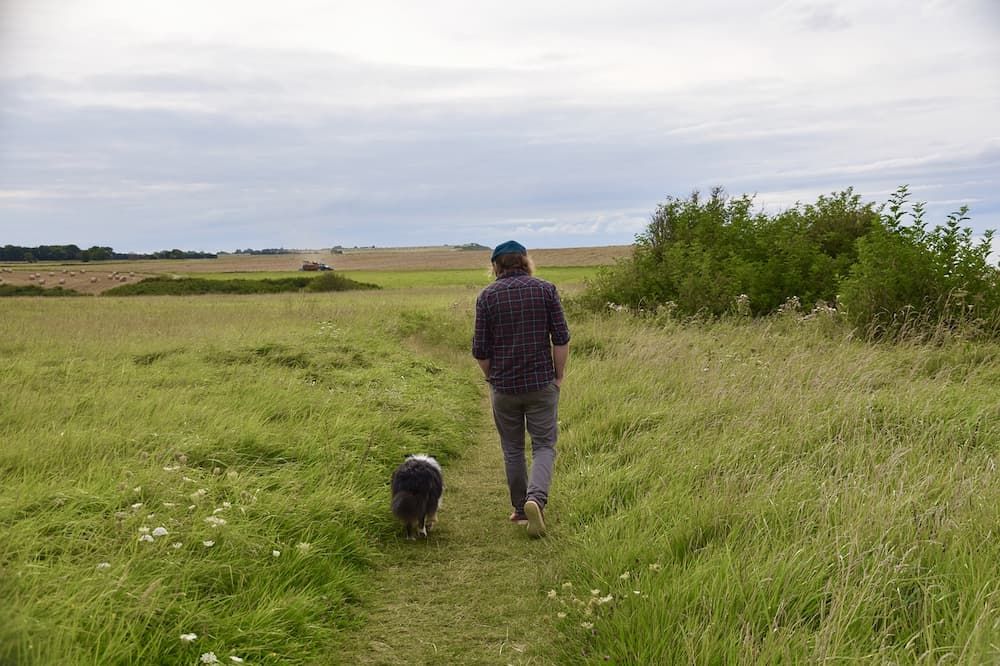

Photo by JackieLou DL from Pixabay
RELATED: Best Interactive Dog Toys to Keep them Busy
FAQs
Is it bad that my dog follows me everywhere?
There is nothing wrong with this. The dog needs your attention, whether it’s playing, eating or walking. When it receives attention, it will calm down.
Do dogs pick a favorite person?
Dogs often choose a loved one who matches their own level of energy and personality. That is, a more sociable, active dog will get along better with the same type of owner.
Why does my dog follow me into the bathroom?
Often, pets come to their owners in the bathroom. This is because the owner is the least protected in such a place, and the animal wants to be close in case of danger. It is not necessary to expel the pet by force, it is better to try the learned commands.
{"@context":"https://schema.org","@type":"FAQPage","mainEntity":[{"@type":"Question","name":"Is it bad that my dog follows me everywhere?","acceptedAnswer":{"@type":"Answer","text":"There is nothing wrong with this. The dog needs your attention, whether it\u2019s playing, eating or walking. When it receives attention, it will calm down."}},{"@type":"Question","name":"Do dogs pick a favorite person?","acceptedAnswer":{"@type":"Answer","text":"Dogs often choose a loved one who matches their own level of energy and personality. That is, a more sociable, active dog will get along better with the same type of owner."}},{"@type":"Question","name":"Why does my dog follow me into the bathroom?","acceptedAnswer":{"@type":"Answer","text":"Often, pets come to their owners in the bathroom. This is because the owner is the least protected in such a place, and the animal wants to be close in case of danger. It is not necessary to expel the pet by force, it is better to try the learned commands."}}]}
Article Sources:
- “Separation Anxiety.” ASPCA, aspca.org/pet-care/dog-care/common-dog-behavior-issues/separation-anxiety.
- Kriss, Randa. “Understanding, Preventing, and Treating Dog Anxiety.” American Kennel Club, akc.org/expert-advice/health/treating-dog-anxiety/.
- “Dealing with Separation Anxiety in Dogs.” Battersea, 26 Feb. 2021, battersea.org.uk/pet-advice/dog-care-advice/stressed-dog-care.






